Prayer worship rituals are an integral part of spiritual traditions around the world. They provide a profound connection to the divine, fostering a sense of unity and transcendence. Whether it’s through prayer, meditation, or ceremonial practices, these rituals offer individuals and communities a way to express their faith and seek spiritual guidance.
In this article, we delve into the fascinating world of prayer worship rituals across various cultures. From ancient traditions to modern practices, we explore the richness and diversity of spiritual rituals and their significance in religious ceremonies.
Key Takeaways:
- Prayer worship rituals are a fundamental aspect of spiritual traditions.
- These rituals provide a connection to the divine and foster a sense of unity.
- Prayer, meditation, and ceremonial practices are common forms of worship.
- Exploring different cultures’ prayer rituals enhances intercultural understanding.
- Respect and awareness of cultural contexts are essential when studying these traditions.
Prayer Traditions in Africa, the Middle East, and Central Asia
The story map developed by the African and Middle Eastern Division focuses on the prayer traditions of Africa, the Middle East, and Central Asia. It showcases a wide range of prayer materials, including manuscripts, rare books, lithographs, and historical postcards. The materials are available in several languages, such as African languages, Hebrew, Arabic, Armenian, Georgian, Ladino, Persian, Turkish, and Turkic languages. This exhibit provides a comprehensive look at the diverse prayer traditions in these regions.
One of the key highlights of this exhibit is the exploration of African religious traditions. African spirituality is deeply rooted in the connection with nature and ancestors. Many African cultures have unique rituals and practices that involve prayer, music, dance, and storytelling to commune with the divine. The exhibit showcases manuscripts and artifacts that shed light on these rich traditions.
Zoroastrianism, Judaism, Christianity, and Islam are also featured in the story map. These major religions have shaped the religious landscape of the Middle East and Central Asia. The exhibit displays prayer materials from these traditions, providing insights into their beliefs, rituals, and practices. Visitors can explore rare books, manuscripts, and historical postcards that offer a glimpse into the spiritual heritage of these regions.
By delving into the prayer traditions of Africa, the Middle East, and Central Asia, this story map aims to foster greater understanding and appreciation for the diverse spiritual practices found in these regions. It encourages visitors to explore the richness of these traditions and their significance in the lives of individuals and communities.
African Religious Traditions
| Tradition | Language | Key Elements |
|---|---|---|
| Yoruba | Yoruba | Orishas (deities), divination, drumming, dance |
| Zulu | Zulu | Ancestors, animal sacrifice, rituals of purification |
| Dinka | Dinka | Cow worship, divination, community rituals |
| San | Khoisan languages | Trance dancing, shamanism, rock art |
“The diversity of African religious traditions is a testament to the rich tapestry of cultures and beliefs found on the continent. Each tradition offers a unique perspective on spirituality and provides a means for individuals to connect with the divine.” – Dr. Kwame Nkrumah, African Religious Scholar
Sacred Objects and Activities in Worship
In many religious communities, worship is aided by a variety of sacred objects and activities. These elements serve to enhance the spiritual experience and create a connection between worshippers and the divine. One common sacred object found in worship settings is the altar. Altars can be made of earth, stone, or metal and serve as a focal point for offerings and prayers.
Worshippers often place offerings such as grain, animals, incense, plants, and flowers on the altar as a way to show reverence and devotion. These offerings symbolize the giving of oneself to the divine and the desire for a deeper connection. By placing these items on the altar, worshippers believe they are inviting the presence of the sacred into their lives.
Sacred scriptures also play a significant role in worship. These texts contain teachings and instructions for leading a righteous life. Stands for reading and preaching are often used to hold these sacred scriptures, emphasizing their importance and allowing the worshippers to engage with the teachings. Other objects, such as religious symbols, prayer beads, and ritual tools, are also used by worshippers to enhance their connection with the divine.
The Importance of Engaging the Senses and the Mind
“The use of sacred objects and activities in worship helps to engage both the senses and the mind. By incorporating visual symbols, fragrant incense, and tactile objects, worshippers are able to connect on a deeper level with their spirituality.”
In addition to sacred objects, worship often involves various activities that engage both the senses and the mind. These activities can include dancing, prayers, preaching, and the use of music. Dancing allows worshippers to express their devotion and joy in a physical and energetic way, while prayers provide an opportunity to communicate directly with the divine.
Preaching and the use of music serve to inspire and educate worshippers, helping them deepen their understanding of their faith. The combination of these activities creates a multisensory experience that enriches the worshipper’s connection with the sacred.
| Sacred Object | Function |
|---|---|
| Altar | Serves as a focal point for offerings and prayers |
| Sacred Scriptures | Contain teachings and instructions for leading a righteous life |
| Religious Symbols | Represent important concepts and beliefs |
| Prayer Beads | Aid in meditation and focus during prayer |
| Ritual Tools | Used for specific religious ceremonies and rituals |
Overall, sacred objects and activities play a crucial role in worship, helping to create a meaningful and transformative experience. By engaging both the senses and the mind, worshippers are able to deepen their connection with the divine and find solace, guidance, and inspiration in their spiritual practices.
Native American Spiritual Traditions
Native American spirituality has a deep reverence for the natural world and sacred land. The connection between Native Americans and the land is profound, with nature seen as a spiritual entity that should be honored and respected. The spirituality of Native American traditions often focuses on the symbolism found in nature, which holds special meaning and significance.
“The land is sacred. These words are at the core of your being. The land is our mother, the rivers our blood. Take our land away and we die. That is, the Indian in us dies.”
Burning sage is a common ritual borrowed from Native American spirituality to cleanse a space of negative energy. Sage is believed to have cleansing properties and its smoke is used to purify the environment and promote spiritual harmony. It is important to approach these sacred practices with respect and sufficient knowledge to avoid cultural appropriation.
| Native American Spiritual Traditions | Nature Symbolism |
|---|---|
| Connection to the land | The land is seen as sacred and worthy of deep reverence. |
| Sacred rituals | Burning sage to cleanse negative energy and promote spiritual harmony. |
| Respect and awareness | It is important to approach these practices with respect and understanding to avoid cultural appropriation. |
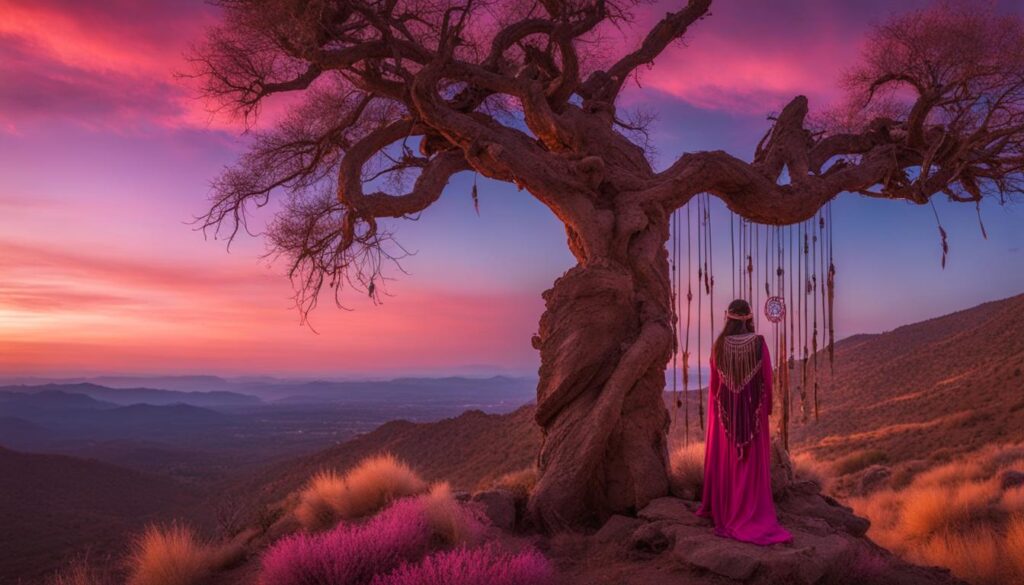
Native American spiritual traditions offer a unique perspective on spirituality, rooted in the deep connection between the land and the people. By acknowledging the sacredness of the land and embracing the symbolism found in nature, Native American spirituality provides a profound way of connecting with the divine.
Wicca, Druidism, and Earth-based Religions
Wicca, Druidism, and other earth-based religions offer unique perspectives on spirituality, emphasizing the connection between humans and the natural world. These traditions often celebrate and worship the cycles of nature, paying homage to the changing seasons and the power of the elements.
In Wicca, practitioners believe in the worship of a God and Goddess, representing the duality of existence. Magic and spellwork are commonly practiced, harnessing the energy from the natural world for various purposes. Herbology, the study and use of plants for healing and spiritual purposes, is also an integral part of Wiccan practices.
Druidism, on the other hand, is rooted in ancient Celtic traditions and beliefs. Druids revere nature and sacred land, considering trees as holy symbols and sources of wisdom. They perform rituals to honor the natural world and often gather in sacred groves.
“The earth-based religions teach us to live in harmony with the natural world and to recognize the interconnectedness of all things.” – High Priestess Evelyn Moonstar
Both Wicca and Druidism place significance on moon cycles, drawing energy and inspiration from the phases of the moon. Full moon gatherings, known as Esbats, are common in these practices and provide opportunities for rituals and spellcasting.
Table: A Comparison of Wicca, Druidism, and Earth-based Religions
| Aspect | Wicca | Druidism | Earth-based Religions |
|---|---|---|---|
| Beliefs | Worship of a God and Goddess, duality of existence | Ancient Celtic traditions, reverence for nature | Connection to nature and the cycles of the earth |
| Practices | Magic, spellwork, herbology | Rituals, sacred groves, sacred land | Emphasis on nature worship and cycles |
| Moon Cycles | Significance of moon phases, Esbats | Connection to moon cycles, lunar rituals | Awareness and connection to moon energy |
These earth-based religions encourage a deep respect for the natural world and the understanding that everything is interconnected. They offer individuals a spiritual path that blends a love for nature, reverence for ancient wisdom, and the exploration of personal power through rituals and magical practices.
Christianity, Islam, Hinduism, and Buddhism: Exploring Spiritual Beliefs, Rituals, and Ways of Being
Christianity, Islam, Hinduism, and Buddhism are among the world’s major religions that encompass diverse spiritual beliefs, rituals, and ways of being. Each of these traditions offers unique insights into the human quest for meaning, purpose, and connection with the divine. By understanding the core tenets and practices of these religions, we can gain a deeper appreciation for their impact on individuals and societies.
In Christianity, spiritual beliefs are centered around the life, teachings, death, and resurrection of Jesus Christ. Followers believe in the existence of one God who is loving, just, and omnipotent. Central rituals in Christianity include baptism, the Eucharist (also known as the Lord’s Supper or Holy Communion), and prayer. The Bible, which consists of the Old and New Testaments, serves as the sacred scripture.
Islam, founded by Prophet Muhammad in the 7th century, emphasizes submission to the will of Allah (God). Muslims believe in the oneness of Allah and in the teachings of the Qur’an, which is considered the direct word of God. The Five Pillars of Islam, which include the declaration of faith, prayer, giving to the poor, fasting during Ramadan, and pilgrimage to Mecca, form the core rituals and practices of this faith.
Hinduism, one of the oldest religions in the world, is characterized by a wide range of spiritual beliefs and practices. It embraces the concepts of dharma (duty/righteousness), karma (the law of cause and effect), samsara (the cycle of birth, death, and rebirth), and moksha (liberation). Hindu rituals and ceremonies are diverse, ranging from daily prayers and offerings to elaborate temple festivals and pilgrimage to sacred sites.
Buddhism, founded by Siddhartha Gautama (Buddha), revolves around the Four Noble Truths and the Eightfold Path. Buddhists seek to eliminate suffering and attain enlightenment through meditation, mindfulness, and ethical conduct. Important rituals in Buddhism include meditation practices, chanting sutras, and offerings to the Buddha and Bodhisattvas. The Tripitaka and other scriptures are considered sacred texts in Buddhism.
Exploring these major world religions provides a window into the rich tapestry of human spirituality, offering insights into the diverse ways people seek transcendence, meaning, and connection. By studying these traditions, we can cultivate a greater understanding and respect for the beliefs and practices that shape the lives of millions around the world.
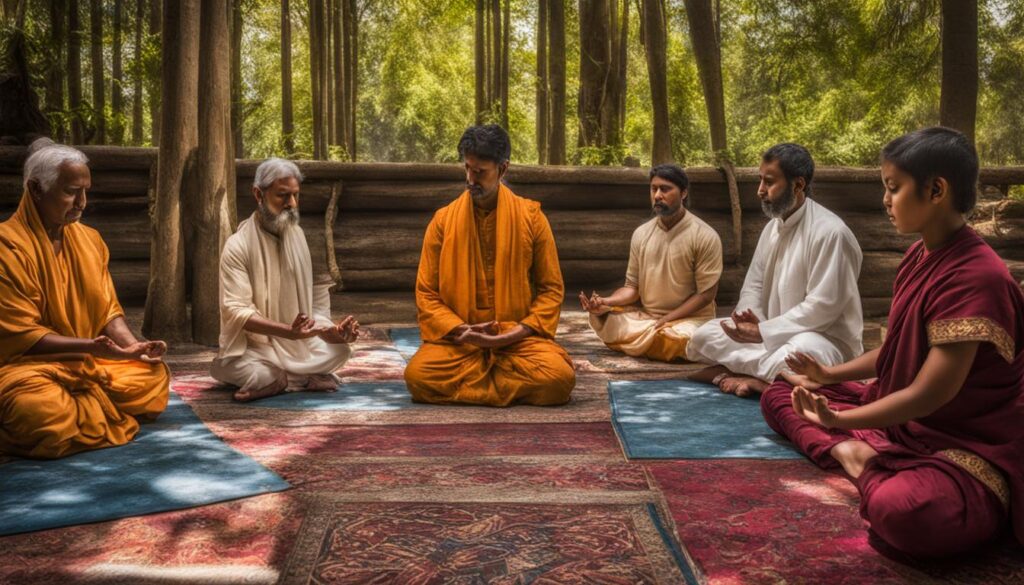
| Religion | Spiritual Beliefs | Rituals | Sacred Texts |
|---|---|---|---|
| Christianity | Belief in one God, Jesus Christ as the savior | Baptism, Eucharist, prayer | The Bible |
| Islam | Belief in one God (Allah), teachings of the Qur’an | Five Pillars: declaration of faith, prayer, giving to the poor, fasting, pilgrimage | The Qur’an |
| Hinduism | Belief in dharma, karma, samsara, moksha | Prayers, offerings, temple festivals, pilgrimage | Vedas, Upanishads, Bhagavad Gita |
| Buddhism | Four Noble Truths, Eightfold Path, seeking enlightenment | Meditation, mindfulness, chanting, offerings | Tripitaka, Mahayana sutras |
The Power of Rituals
In religious and spiritual practices, rituals hold a deep and profound significance. They are more than just routine actions; they bring focus to the sacred, transcend ordinary existence, and provide a sense of renewal. Moreover, rituals have the power to enhance our everyday lives and improve our relationships, bringing a deeper sense of meaning and purpose to our experiences. By exploring various spiritual traditions and understanding the rituals within them, we can discover practices that resonate with our own beliefs and values.
Rituals play a crucial role in our connection to the divine. They create a sacred space and time in which we can connect with something greater than ourselves. Whether it is through prayer, meditation, or the performance of specific actions, rituals serve as a reminder of our spiritual nature and cultivate a sense of reverence. Through repetition and intention, rituals help to anchor us in the present moment and allow us to experience the depths of our spirituality.
“Rituals have the power to transform the ordinary into the extraordinary and infuse our lives with a sense of purpose.”
Furthermore, rituals have the ability to enrich our daily lives and relationships. They provide a sense of structure and rhythm, grounding us in our values and priorities. For example, having a morning ritual of gratitude or reflection can set the tone for the day and foster a positive mindset. Rituals can also strengthen our bonds with others, creating shared experiences and deepening connections. Whether it is a family mealtime ritual or a spiritual gathering, rituals bring people together and reinforce a sense of community.
The power of rituals lies in their ability to infuse our lives with depth and meaning. They invite us to slow down, be present, and engage fully in the moment. Rituals enable us to bring intention and purpose into our actions, allowing us to cultivate a sense of the sacred in everything we do. As we explore different traditions and discover rituals that resonate with us, we open ourselves up to a world of spiritual significance and transformation.

The Power of Rituals in Everyday Life
Table: Examples of Everyday Rituals
| Ritual | Description |
|---|---|
| Morning Meditation | A daily practice of quiet contemplation to start the day with clarity and focus. |
| Family Mealtime | Gathering around the table to share a meal, connect, and create lasting memories. |
| Bedtime Routine | A series of calming activities to prepare the mind and body for restful sleep. |
| Gratitude Journaling | Writing down things to be grateful for each day, cultivating a positive mindset. |
| Sunset Reflection | Taking a moment to appreciate the beauty of the sunset and reflect on the day. |
These are just a few examples of the countless rituals that can be incorporated into our everyday lives. Each ritual holds its own significance and can bring a sense of purpose and meaning to our daily routines. By embracing rituals, we can create a deeper connection to ourselves, others, and the world around us.
Conclusion
Exploring the diverse prayer worship rituals and spiritual traditions across different cultures opens up a world of rich cultural awareness and a deep search for meaning. Through studying the practices of various traditions, we can gain a greater understanding of our own beliefs and values.
It is crucial to approach these traditions with respect and recognize their historical and cultural contexts. By doing so, we foster a deeper appreciation for the uniqueness of these rituals and the spiritual significance they hold for those who practice them.
Engaging in the study of prayer worship rituals and spiritual traditions allows us to broaden our perspectives, embracing the diversity that exists in the world. This exploration enables a greater cultural awareness, fostering empathy and understanding in our everyday lives and interactions with others.
Ultimately, the search for meaning and truth lies at the heart of our fascination with these spiritual practices. Whether it be through prayer, rituals, or other forms of worship, embracing a diverse range of traditions enriches our personal journey and brings us closer to the realization of our own spiritual path.
FAQ
What is the purpose of the “Prayer Traditions in Africa, the Middle East, and Central Asia” story map?
The purpose of the story map is to explore major religions and prayer traditions through materials housed in the Library of Congress, enhancing public awareness of cross-regional and intercultural religious understanding.
What materials are showcased in the story map?
The story map showcases manuscripts, rare books, lithographs, and historical postcards in various languages such as African languages, Hebrew, Arabic, Armenian, Georgian, Ladino, Persian, Turkish, and Turkic languages.
What are some examples of sacred objects and activities in worship?
Examples of sacred objects and activities in worship include altars made of earth, stone, or metal; offerings such as grain, animals, incense, plants, and flowers; sacred scriptures; stands for readings and preaching; and other objects used by worshippers to focus attention on the holy.
What are some key aspects of Native American spirituality?
Native American spirituality emphasizes the honoring and respecting of the land and Mother Earth, as well as the spiritual symbolism found in nature. Burning white sage is a common ritual borrowed from Native American spirituality to cleanse a space of negative energy.
What are some characteristics of Wicca, Druidism, and other earth-based religions?
Wicca, Druidism, and other earth-based religions focus on positive energy, the worship of a God and Goddess, and the celebration of nature’s cycles. Practices such as magic, herbology, and attention to moon cycles are often embraced.
What can exploring major world religions offer?
Exploring major world religions like Christianity, Islam, Hinduism, and Buddhism can provide insights into spiritual beliefs, rituals, and ways of being, enriching our own lives and fostering awareness and understanding.
What is the significance of rituals?
Rituals play a significant role in religious and spiritual practices, bringing focus to the sacred, transcending ordinary existence, and providing a sense of renewal. Rituals can enhance everyday life, improve relationships, and bring a deeper sense of meaning and purpose.
How can studying prayer worship rituals across different cultures benefit us?
Studying prayer worship rituals across different cultures deepens our understanding of our own beliefs, fosters cultural awareness, and allows us to embark on a personal search for meaning and truth.
Source Links
- https://medium.com/@marjoriedadhich/6-spiritual-traditions-what-i-learned-and-why-it-matters-5febe017555e
- https://blogs.loc.gov/international-collections/2022/08/prayer-traditions-a-virtual-journey-through-africa-the-middle-east-and-central-asia/
- https://www.britannica.com/topic/worship/Focuses-of-worship


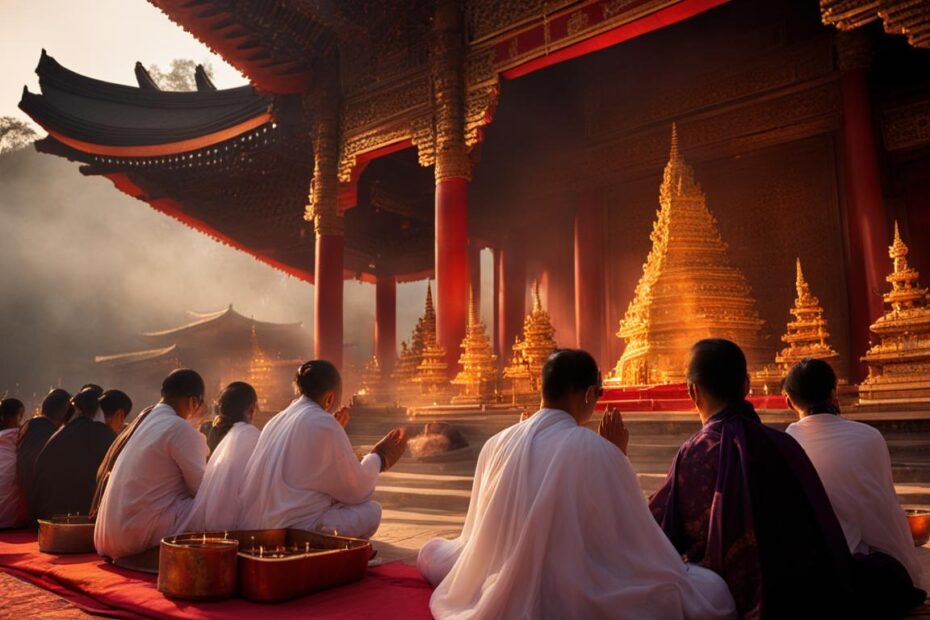




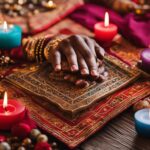
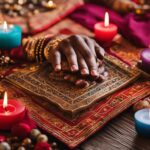
Pingback: My Homepage
Pingback: Lumi Wallet
Pingback: เซรั่มหอมแดง
Pingback: film izle
Pingback: pg168
Pingback: diaphragm pump
Pingback: เพิ่มยอดวิว
Pingback: momo128
Pingback: ร้านเค้กวันเกิดใกล้ฉัน
Pingback: link
Pingback: clinical psychologist fairfax va
Pingback: heng678
Pingback: มีบุตรยาก
Pingback: league88
Pingback: pg168
Pingback: clash
Pingback: ufa777
Pingback: ทดลองเล่นสล็อต PG SLOT
Pingback: mmabet
Pingback: บ้านบางนา
Pingback: betflix wallet
Pingback: ดูแลผู้สูงอายุ
Comments are closed.